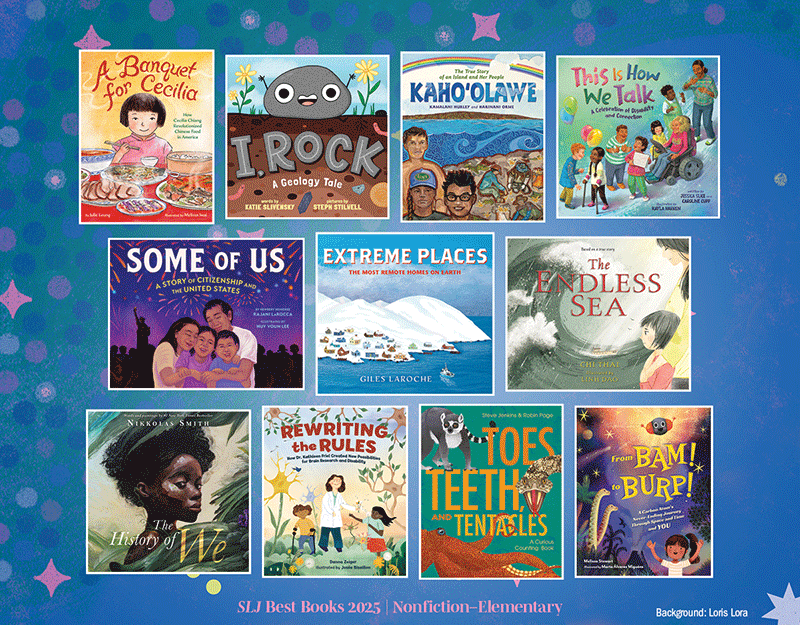SCROLL DOWN TO READ THE POST
Death and Love: Sorrow’s Knot & The Coldest Girl in Coldtown
Today, I’m talking about two books that are in my personal top 10 of the year. And both revolve around death and love, two primal, powerful pieces of life.
And they’re both fantastic.
Other than that, they’re really different, and I suspect neither of them has much chance at a Printz nod, which is sort of a shame.
 The Coldest Girl in Coldtown, Holly Black
The Coldest Girl in Coldtown, Holly Black
Little Brown, September 2013
Reviewed from ARC and final e-book
I am an unabashed fangirl when it come to Holly Black. I like to pretend she’s my soul mate (she’s actually so much cooler than I am): we both drank from the same well of stories as kids, and so her books tend to speak to me on several levels; as a librarian, I admire them; as a reader I love them; and as a former teen I feel a sense that something that once was lacking now exists.
But I’m also a critic, and while I adore her work, I don’t think it’s flawless (except maybe The Poison Eaters and Other Stories, which might be). Coldtown is a great read, but it has some issues. Also, vampires. Maybe I’m an old cynic, but I think the anti-vampire bias runs so deep in most librarians these days that Coldtown risks a cold shoulder as a result.
ADVERTISEMENT
ADVERTISEMENT
Although, having said that, these are totally your mother’s vampires, in the sense of actually scary and menacing and all about darkness. They don’t glitter, they’re not nice, and they serve as a vehicle for an adventure/coming of age/morality tale mashup with a lot of depth to go along with the blood.
The good: Black’s prose is, as always, on. She’s got a sharp ear for dialogue, and the cinematic descriptions bring every moment into sharp focus. You don’t need an imagination to see Coldtown; she’s written it right put and the descriptions are incredible. Right from the start, in that chilling slow horror build of the first chapter:
The tan carpet was stiff and black with stripes of dried blood, spattered like a Jackson Pollock canvas. The walls were streaked with it, handprints smearing the dingy beige surfaces. And the bodies. Dozens of bodies. People she’d seen every day since kindergarten, people whom she’d played tag with and cried over and kissed, were lying at odd angles, their bodies pale and cold, their eyes staring like rows of dolls in a shop window.
Of course, all this description comes at a price; this is a commercial book, with plenty of appeal for the masses, and while that doesn’t make a book not literary, it makes it a harder sell in my experience. And much as I love the images Black chooses, occasionally they smack a bit of cliches and tropes; I find dead people with eyes like dolls really darn spooky, but I’ve also come across similar images in writing before.
More good: the reality TV/exploitation angle. This is a solid story — girl with an emotional black hole caused by a horrendous childhood experience flirts with death, comes face to face with it, goes on road trip to the heart of death, and finds love and the will to live. What’s not to love in that? And it’s a similarly solid subversion of the usual coming of age, because it keeps running so close to coming of death, so it’s a relief and a triumph to watch Tana find herself and her strength. But beyond the emotional core that is Tana’s journey, there’s the discussion of reality TV, of the always-on, always watched nature of society; the vampires in the coldtowns play to an audience outside to lure in a constant supply of fresh blood; they exploit media images and the desire for vampires that sparkle. There’s a scathing commentary there as well as a meta commentary on the paranormal romance trope; death is not sexy. It just looks like it might be from a safe distance.
But again, the good is not without flaws: Tana’s risky behavior and generally troubled self is something the reader hears about but actually, from moment one she’s thoughtful and has a tendency to basic human decency, so the emotional core is satisfying but not astounding — because it’s actually inevitable given how Tana is written. I’ve also heard some complaints about the plot. It works for me, but again, reading from the all-in perspective; the pacing — the slowness of the road trip and then the faster pacing in Coldtown and the acceleration again towards the end with the Gavriel storyline — threw some readers off. Whether that’s a flaw or just a your-mileage-may-vary moment is something the RealCommittee would need to grapple with if this is nominated. Which, like I said, I suspect it wasn’t because of biases against commercial genre fiction.
And finally, let’s talk about Gavriel and how he’s awesome and Spike-like and how I totally would have had a thing for him as a teen reader. No, actually, let’s not talk about any of that, but instead about how this book that has so much subversive strength and plays the Tana-Gavriel relationship for the messed up thing it is also sort of celebrates it, which I was, okay, very satisfied by as a reader, but which I think is a thematic weakness in terms of the larger threads about vampires in reality being monsters and bad news, and about the differences between projected image and reality.
So my final assessment? Top of my list of books for the year, but not on my list of likely or top Printz contenders.
 Sorrow’s Knot, Erin Bow
Sorrow’s Knot, Erin Bow
Arthur A. Levine (Scholastic), November 2013
Reviewed from ARC
More love! More genre!
If I leave it there, I’m probably not giving this gem its fair due.
And it is a gem. Bow’s stock in trade seems to be playing with the ideas and mythologies surrounding death in different cultural pockets; Plain Kate had an Eastern European/Gypsy flavor, while Sorrow’s Knot is Native North American, except not. But again, like The Coldest Girl in Coldtown, there are flaws, and I think that this is both a stronger and a weaker book than many this year.
Let’s start with the good again: The writing, especially for the first half or so (up until they find The Eyrie), is magnificent. Bow has an ear for the rhythm of a storyteller’s story, which she uses on multiple levels. This is a crafted, literary tale, but it has something in it of the spoken tradition. There’s rhythm, lots of repetition of words or phrases and small changes of phrase that are from a storyteller’s bag of tricks, that evoke fairy tales, and that fall like music. And as an added level of writing, there is language specific to the book and the world that is used within the world as metaphor — “between them bloomed a ward of smiles.”
The dialogue manages to be both perfectly suited to the world and time Bow has built and still have a whiff of the teens of today, in a way that is funny and smart and not at all anachronistic — the moment when Otter and Kestrel are watching Cricket play hoop and lance badly, and Otter makes a bawdy joke and Kestrel comes right back — it’s ribald but also sort of sly and quiet. It’s silly and exactly on target and it’s the same thing, with a different set of metaphors, as the occasional conversation I overhear among the teens I work with every day. The entire depiction of the friendship between Otter, Cricket, and Kestrel is built through the dialogue and small moments, and it’s a believable, touching friendship. As a reader I see a thousand small ways these relationships matter, and because it’s shown through so many genuine moments the reader cares too. (And given that so much plot is propelled by actions that grow from that friendship, it is critical that is ring real.)
The world is likewise precisely crafted, with an attention to detail; this is an alternate earth fantasy, but it’s physicality is undeniable: you could map it and chart the flora and fauna, and the magic too. The magic makes sense within the tale and is integral to the plot. The internal logic doesn’t falter. It’s also drawing on Native American traditions; the afterword makes it clear that Bow neither means to refer to any specific moment or tribe and also that she did a lot of very intense research. But — is this appropriation? I’d argue that here it isn’t — it’s not a parallel to the situation that was discussed with In Darkness last year, for example. However, these are questions that I could see coming up if this one makes it to the table for discussion, and while they come down to subjective response, they are minefield questions.
Thematically, this might be the strongest evocation of grief I’ve ever read, examined and shown in so many ways both small and large; death is a big idea and Bow makes that big idea resonate throughout everything in the book. There’s also storytelling as a theme — stories can save (literally), and secrets kill; stories contain truth. This plays off the storytelling as voice in beautiful ways; we are reading stories in and about stories on several levels here. Recurring motifs and ideas also include mothers and daughters, change, and the journey west as a figurative and literal movement. It’s all naturally worked in, but to go back to Hannahlily’s observation that a good Printz book contains rich enough multitudes that we could write papers about them — yes, I could write a paper or three about this book.
The bad: rereading, right up until the moment Cricket dies, I was ready to bump this up to my top pick. But the second half isn’t as tight and has some stumbles that are actually pretty significant. The romance, Orca’s kiss as a thing that saves Otter — twice! — and, as we get more of the story of the White Hands, the logic of why they take over someone else even as they are unbound, all loom as real issues that weaken the tale. The male savior aspect of Orca’s character also breaks the hero’s journey trajectory for Otter, although read as a fairy tale perhaps a kiss is inevitable? Even if, like a fairy tale, it doesn’t have enough substance behind it.
ADVERTISEMENT
ADVERTISEMENT
And those zombie/cannibal figures from Orca’s past are either needless clutter or else are there to set up a sequel, and either way they are distracting and weaken the role of the bound dead as the supreme and terrifying thing, which was so powerful; it turns out this world is just teeming with things that go bump in the night.
Actually, most of my concerns boil down to the told-not-shown, cluttered backstory, lean-muscled tale of Orca, whom I liked well enough on the first read, but on the second read it comes across more like he exists for expository functionality — at one point there is an explicit statement that an outsider’s perspective is what allowed Otter to figure out what was wrong. And the romance is sweet enough, I suppose, if sketched in and without enough substance. Contrasted as it inevitably is against Kestrel and Cricket’s relationship, and playing out even as Otter realizes that in so many ways Cricket saved the world (he broke the rules and told the story and set out West first — he’s the unsung hero) and was effectively sentenced to death for absolutely no reason — it just cheapens the first part of the book and it looks like weak storytelling and characterization in comparison to the first half and the elements that thread throughout.
As far as Printz potential goes, I think the first half should have earned this a nomination, but the fact that it falters compared to itself is a significant blow against the book’s chances.
So there it is. Two books, both genre, both wonderful and flawed. I’m predicting no nods for either, even if they get the Karyn’s top ten nod for the year. What say you?
Filed under: Books to look for, Contenders, Fiction
About Karyn Silverman
Karyn Silverman is the High School Librarian and Educational Technology Department Chair at LREI, Little Red School House & Elisabeth Irwin High School (say that ten times fast!). Karyn has served on YALSA’s Quick Picks and Best Books committees and was a member of the 2009 Printz committee. She has reviewed for Kirkus and School Library Journal. She has a lot of opinions about almost everything, as long as all the things are books. Said opinions do not reflect the attitudes or opinions of SLJ, LREI, YALSA or any other institutions with which she is affiliated. Find her on Twitter @InfoWitch or e-mail her at karynsilverman at gmail dot com.
ADVERTISEMENT
SLJ Blog Network
Notes on November 2025
It’s Almost Heeeere….
Pushing Hope: An Illustrated Memoir of Survival | Review
Audiobook Review: The Dysfunctional Family’s Guide to Murder by Kate Emery
The Classroom Bookshelf is Moving
ADVERTISEMENT
ADVERTISEMENT







